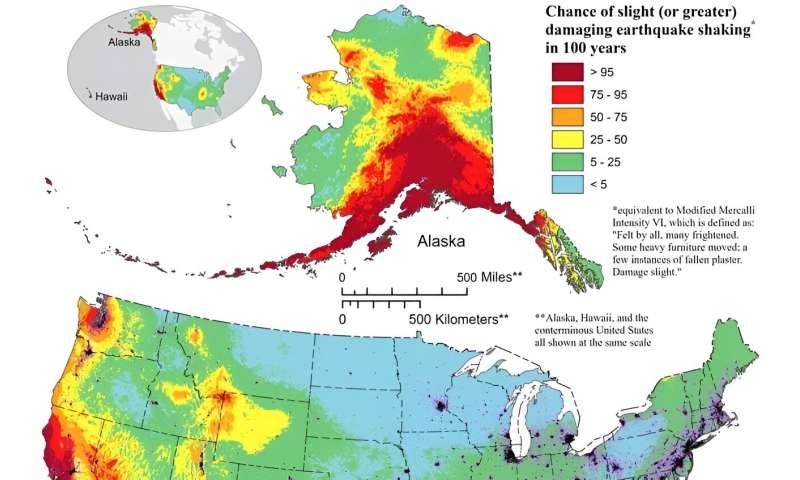Best of Last Week—map of possible earthquakes, unique robot grows itself, VA most efficient hospital system

It was a good week for geoscience research as a team led by the U.S. Geological Survey created a new map that shows where damaging earthquakes are most likely to occur in the U.S. Among other things, it shows that nearly 75% of the country could experience a damaging quake sometime in the foreseeable future. Also, team members on the international IODP expedition Hellenic Arc Volcanic Field found evidence of one of the largest explosive eruptions ever recorded in the Aegean Sea in the Greek archipelago of Santorini. And a global team of ocean and climate experts uncovered a new marine source of carbon emissions into the atmosphere—sediment disturbed by fishers dragging nets across the ocean floor.
In technology news, a trio of soft robotics researchers at Fondazione Istituto Italiano di Tecnologia, in Italy, working with a colleague from the University of Montpellier, in France, developed a unique type of robot that 3D prints its own body to grow longer. They believe it might prove useful for placing sensors in difficult-to-access areas. And a team of chemists at MIT, working with a colleague from the University of Bologna, found that the Earth-abundant, carbon-based cathode material bis-tetraaminobenzoquinone might be able to replace cobalt and other scarce and toxic metals without sacrificing lithium-ion battery performance. Also, a combined team from the University of Michigan and the Max Planck Institute for Intelligent Systems in Stuttgart, report that a squishy, metal-free magnetic gel they developed might be used to power robots and to guide medical implants. And a team of computer scientists from the Hong Kong University of Science and Technology, the University of Science and Technology of China, Tsinghua University and Microsoft Research Asia developed a simple technique to defend ChatGPT against jailbreak attacks.
In other news, a team of medical researchers at the University of Sheffield in the U.K. found that energy-starved breast cancer cells consume their surroundings for fuel—a finding that helps explain how they survive. Also, a combined team of physicists from the University of Cambridge and the Max Planck Institute for Polymer Research, found a property of water molecules that contradicts textbook models. Molecules on the surface of salt water, they found, organize themselves differently than theory suggests they should. And finally, a study conducted by several institutions in the U.S. found that the most efficient health care system in the U.S. is the one run by the Veteran's Administration.
© 2024 Science X Network